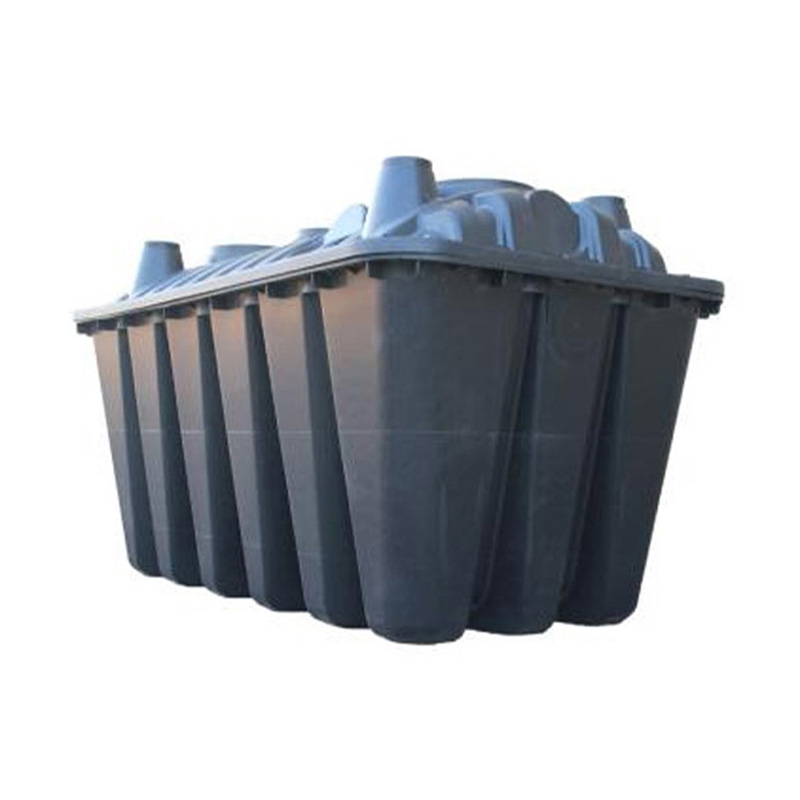U-Shaped PE Farmland Trough Linear Plastic Drainage Ditch
Cat: Plastic Drain Channel
The U-shaped PE farm field linear plastic drainage ditch is a revolutionary solution designed to address the drainage needs of agricultural land....
See DetailsFats, oils, and grease (FOG) must be managed in commercial kitchens, dining establishments, and food processing facilities using plastic grease traps and plastic oil water separators. Choosing the right size for a plastic grease trap is crucial to ensure efficient operation and prevent clogs in your wastewater system. Improper sizing can cause to frequent maintenance, foul odors, or even violations of local environmental regulations.
Why Proper Sizing Matters
The primary function of a plastic grease trap is to intercept grease before it enters the sewage system. If the trap is too small, grease can overflow or bypass the trap entirely, creating a potential hazard for pipes and municipal systems. Similarly, a plastic oil water separator with inadequate capacity may fail to properly separate oil from water, causing contamination. Correct sizing ensures both equipment types perform effectively, reduce maintenance costs, and comply with local regulations.

Factors Influencing Grease Trap Size
When selecting a plastic grease trap, several factors should be considered:
Flow Rate of Your Facility
The flow rate, measured in gallons per minute (GPM), is a critical factor. Higher water flow requires a larger trap to ensure the grease has time to separate from the wastewater. For example, a busy restaurant producing hundreds of gallons of wastewater per day will need a much larger trap than a small café.
Grease Production
Estimate the amount of grease your kitchen generates daily. This can vary depending on the type of food prepared, cooking methods, and volume of operations. Accurate estimation prevents frequent cleanings and prolongs the trap’s operational life.
Type of Equipment Used
Some commercial kitchen equipment generates more FOG than others. Deep fryers, dishwashers, and high-capacity sinks all contribute differently to grease accumulation. Take these into account when choosing a trap.
Local Regulations
Municipalities often provide guidelines for grease trap sizing. These regulations may specify retention times, flow rates, or maintenance intervals. Ensuring compliance avoids fines or mandatory replacement.
Calculating the Correct Size
A general formula can guide you:
Required Trap Size = Flow Rate (GPM) × Grease Retention Factor
The grease retention factor accounts for the type of food and grease produced. Many manufacturers, including Weicai, provide sizing charts to help match facility requirements with the appropriate plastic grease trap model. It’s always recommended to consult a professional or supplier for precise sizing.
Practical Tips for Selecting a Grease Trap
Allow Room for Maintenance: Ensure there is enough clearance around the trap for cleaning and inspections.
Future Expansion: If your kitchen plans to increase production, consider a slightly larger trap to accommodate growth.
Regular Inspection: Even properly sized traps need regular maintenance. Visual inspection helps detect issues early.
Integrating with Oil-Water Separators
For facilities that handle other oily wastewater streams, combining a properly sized plastic grease trap with a plastic oil water separator improves overall efficiency. The grease trap handles solid and semi-solid FOG, while the separator manages free-floating oils. This two-step approach minimizes environmental impact and prolongs the life of plumbing systems.
By understanding flow rates, grease production, and local regulations, and by consulting experts like Weicai, you can select a trap that ensures smooth kitchen operation and environmental responsibility. Taking the time to calculate the right size reduces maintenance frequency, prevents clogs, and supports long-term sustainability in your facility.
It would be great to hear from you!